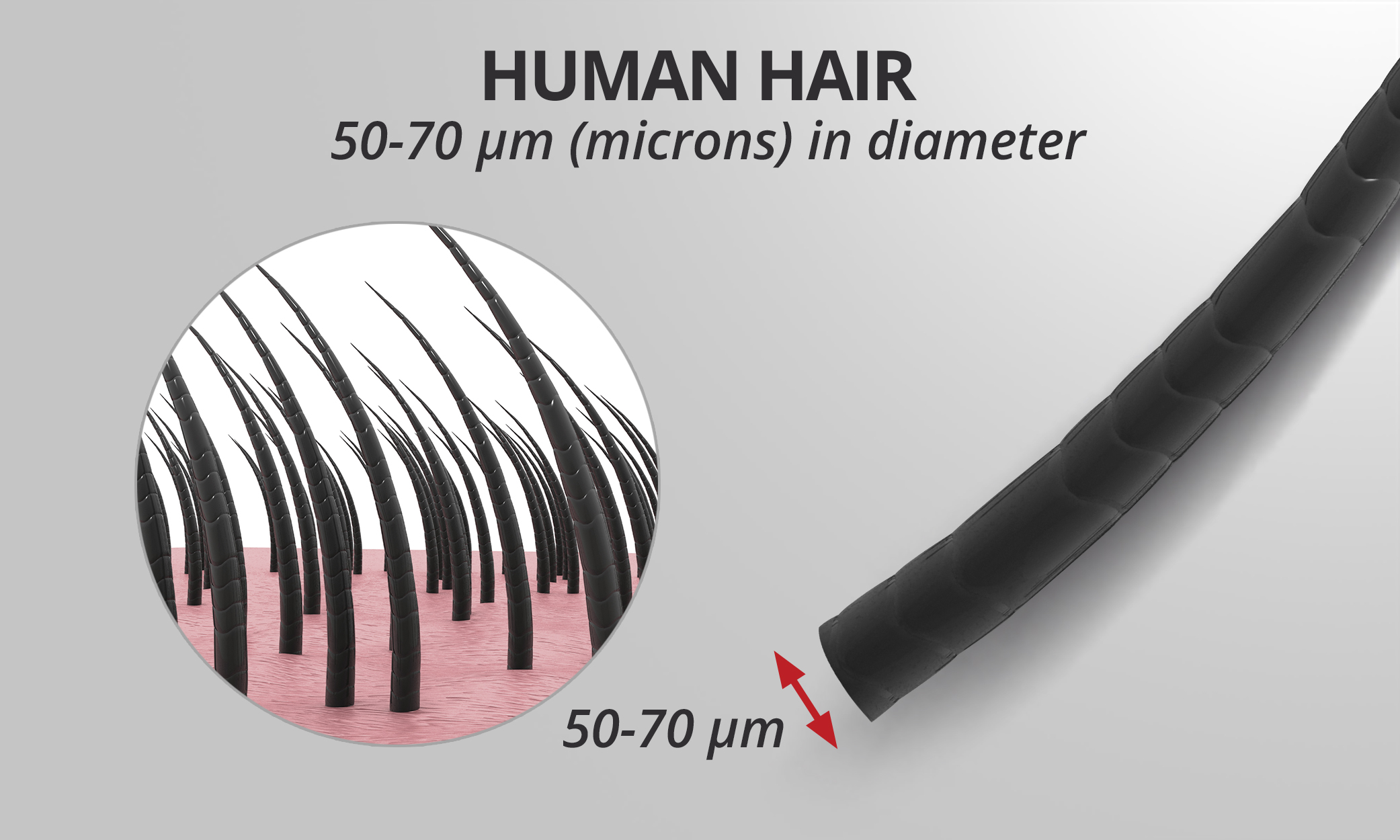Microns and Micron Ratings: What Every Fuel Site Operator Needs to Know

At some point, most humans lose the capability to grasp just how immense or minute certain numbers or objects are. Take, for example, the number one trillion. A trillion is one million million, meaning that if you were to spend one million dollars a day, you would need one million days to spend one trillion dollars. Or, in other words, you would finally be able to stop writing million-dollar checks sometime in the year 4774.
At the other end of the spectrum, consider the micron. By definition, a micron, which is also known as a micrometer, is a unit of measurement equal to one-millionth of a meter, meaning that there are 1,000 microns in a millimeter. Put differently, one micron is equal to 1/25,000th of an inch. The naked eye can see objects as small as 40 microns. As a point of reference, the diameter of a human hair is 70 microns, and a red blood cell is 8 microns. About 400 microns would fit in the period at the end of this sentence.
So why should fuel site operators care about something so small? Basically, most fuels contain some form of particulate matter. If those particulates are allowed to enter a vehicle’s fuel tank they can damage the vehicle’s engine and other operating systems. That’s why filters are placed on fuel dispensers, to trap potentially harmful particulates before they can enter the vehicle.
But it’s not enough to just place a filter on the fuel dispenser. The fuel-site operator must know that the filter media is capable of trapping even the most minute pieces of particulate matter.
That’s why dispenser fuel filters feature a “micron rating.” The micron rating of a fluid filter is a generalized way of indicating the ability of the filter’s media to trap particulates by the size of the particulates it is exposed to. So, a 10-micron fuel filter can theoretically capture particulates that are 10 microns or larger in size, which is about the consistency of talcum powder.
Additionally, there are two popular ways to communicate a micron rating. The first is a “nominal” micron rating, which means that a filter can trap a given percentage of particulates of a certain size; for example, a 10-micron filter can have a nominal rating of 50%, which means it will trap half of all particulates that are 10 microns or larger.
An absolute micron rating lets the user know what percentage of particulates of a certain size will be trapped by the filter media. An absolute micron rating can be determined by single-pass or multi-pass testing and is usually obtained by passing a test fluid containing particles of a known size through a filter. All particles that pass through the filter are counted and measured. For instance, a 10-micron fuel filter with an absolute micron rating of 99% contains a filter media that will trap all but 1% of the particulates 10 microns or larger that attempt to pass through it.
It is important to note in most cases neither an efficiency alone nor a particle size alone will convey any useful information. The specific micron rating for individual filters should be expressed with an efficiency and a particle size, such as 90% at 20 microns. In this example, 90% of all particles 20 micron and larger will be trapped by the filter. As the particle size increases so does the removal efficiency.
PetroClear helps ease the challenges inherent in protecting your fuel dispensers from harmful particulates by manufacturing a line of 10- and 30-micron petroleum-dispensing filters that are approved for use with various types of fuel including 100% gasoline, ethanol blended fuels, diesel, biodiesel, etc. PetroClear filters deliver micron ratings that help prevent damage to vehicle engines, giving both the fuel-site operator and driver enhanced peace of mind.
For more information regarding micron ratings or additional information on PetroClear fuel-dispensing filters, contact your local sales representative or call 1-800-882-0890.





